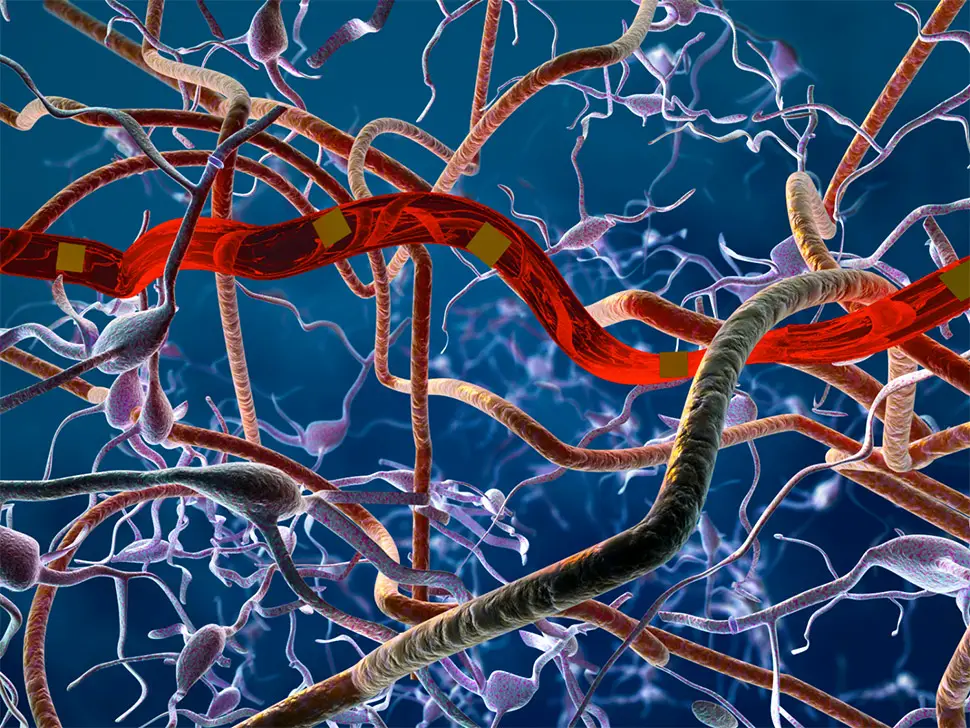
27th February 2017 Ultra-flexible brain probes demonstrated Researchers from the University of Texas at Austin have developed ultra-flexible, nanoelectronic thread (NET) brain probes, designed to achieve more reliable long-term neural recording than existing probes and without causing scar formation when implanted.
A team led by assistant professor Chong Xie and research scientist Lan Luan, from the University of Texas at Austin, have developed new probes that have mechanical compliances approaching that of brain tissue and are over 1,000 times more flexible than current neural probes. This ultra-flexibility leads to an improved ability to reliably record and track the electrical activity of individual neurons for long periods of time. There is a growing interest in developing long-term tracking of individual neurons for neural interface applications – such as high-performance prostheses for amputees, as well as new methods of following the progression of neurodegenerative and neurovascular diseases such as stroke, Parkinson's and Alzheimer's. One of the problems with conventional probes is their size and mechanical stiffness; their larger dimensions and stiffer structures often cause damage around the tissue they encompass. Additionally, while it is possible for the conventional electrodes to record brain activity for months, they often provide recordings that are unreliable and degrade over time. It is also hard for conventional electrodes to track individual neurons for more than a few days. In contrast, the UT Austin team's electrodes are flexible enough to comply with micro-scale movements of tissue and still stay in place. The probe's size also drastically reduces tissue displacement, so the brain interface is more stable, and the readings are more reliable for longer periods of time. To the researchers' knowledge, this new probe – which is as small as 10 microns at a thickness below 1 micron, and has a cross-section that is only a fraction of that of a neuron or blood capillary – is the smallest neural probe ever developed.
Following tests on mice, the researchers found that the probe's flexibility and size prevented the agitation of glial cells, which is the normal biological reaction to a foreign body and leads to scarring and neuronal loss. "The most surprising part of our work is that the living brain tissue – the biological system – really doesn't mind having an artificial device around for months," Luan said. The researchers also used advanced imaging techniques in collaboration with biomedical engineering professor Andrew Dunn and neuroscientists Raymond Chitwood and Jenni Siegel from the Institute for Neuroscience at UT Austin, to confirm that the neural interface did not degrade in the mouse model for over four months of experiments. The researchers plan to continue testing their probes in animal models and hope to eventually engage in clinical testing. Their latest research is published in the journal Science Advances. ---
Comments »
|







